A aquisição da VMware pela Broadcom fez com que muitos líderes de TI reavaliassem sua estratégia de virtualização. O aumento dos custos a cada ano desde a aquisição, os novos modelos de licenciamento e as opções limitadas de suporte deixaram os clientes de longa data frustrados e procurando outro lugar. A Gartner previu recentemente que a VMware perderá 35% de sua carga de trabalho. À medida que 2025 avança, mais organizações estão procurando ativamente por uma solução confiável para o seu negócio. Alternativa à VMware que oferece flexibilidade, melhor valor e uma experiência mais tranquila em geral.
Se a sua equipe é uma delas, você não está sozinho. O afastamento da VMware não é apenas uma questão de preço. Trata-se de encontrar uma solução que se adapte à sua empresa, e não o contrário. Nesta publicação, explicaremos por que o mercado está se movimentando, o que procurar em uma substituição e como as principais alternativas, como o Inuvika OVD Enterprise (para substituir o VMware/Omnissa Horizon) e o VergeOS (para substituir o VMware Broadcom), estão se preparando para preencher a lacuna.
O que está motivando a saída da VMware?
Durante anos, a VMware dominou o espaço de virtualização de desktops. Muitas empresas criaram sua infraestrutura com base nela, confiantes em seus recursos e histórico. Mas quando a Broadcom entrou em cena, a experiência mudou rapidamente.
Os clientes relataram:
- Termos de licenciamento confusos e restritivos
- Eliminação de licenças perpétuas
- Pacotes de produtos necessários
- Aumento dos custos anuais
- Atrasos no suporte técnico
Ultimamente, a VMware Broadcom também tem enviado avisos de rescisão aos parceiros que não atendem aos requisitos mínimos de vendas, deixando-os com pouco tempo para encontrar uma alternativa da VMware
Essas mudanças podem funcionar para grandes empresas com grandes recursos e contratos de suporte dedicados, mas para muitas equipes de TI, especialmente as de médio porte ou preocupadas com o orçamento, isso é demais e muito rápido. É por isso que aumentou o interesse em uma alternativa VMware mais simples e econômica.
O que uma alternativa à VMware deve oferecer?
Substituir a VMware não se trata apenas de cortar custos. Trata-se de resolver os mesmos problemas com menos atrito.
Existem muitas opções no mercado para substituir o hipervisor VMware Broadcom. Elas variam desde as mais antigas, como Nutanix, AHV, KVM e XenServer, até as mais novas e de baixo custo ou sem custo, como Hyper-V, VergeOS e ProxmoxVE. Como há menos opções no mercado de computação para o usuário final para substituir o VMware Horizon, vamos nos concentrar nas alternativas ao VMware Horizon neste artigo.
A solução certa de infraestrutura de desktop virtual deve oferecer isso:
- Excelente desempenho com suporte para cargas de trabalho do mundo real
- Preços transparentes e acessíveis, sem taxas surpresa
- Suporte acessível que realmente resolve os problemas
- Migração suave dos sistemas existentes sem grandes interrupções
- Implementação flexível em ambientes no local, híbridos ou na nuvem
- Evite a dependência do fornecedor
Nem todas as soluções de virtualização de desktops atendem a esses requisitos. Mas algumas sim, especialmente as plataformas mais novas que foram criadas com essas necessidades modernas em mente.
As principais alternativas à VMware em 2025
Vamos dar uma olhada mais de perto em como as alternativas mais comentadas do VMware Horizon se comparam em termos de desempenho, custo e usabilidade.
Inuvika OVD Enterprise
O que ele oferece
A Inuvika é uma solução de desktop virtual criada para fins específicos que fornece aplicativos e desktops em ambientes Linux e Windows. Diferentemente da VMware, ela é leve, transparente e foi projetada para reduzir o custo total de propriedade em até 60%.
Por que funciona
A Inuvika simplifica tudo. Da instalação ao gerenciamento diário, sua interface intuitiva permite que as equipes de TI implementem e gerenciem desktops e aplicativos rapidamente, sem a necessidade de um especialista em virtualização dedicado.
Principais Benefícios
- Custos de licenciamento mais baixos e preços previsíveis
- Suporte total para aplicativos Linux e Windows
- Compatível com uma ampla gama de endpoints
- Opções de implementação em nuvem, híbrida ou no local
- Suporte responsivo e orientado por especialistas: não em níveis terceirizados.
- Agnóstico em relação ao hipervisor, permitindo opções para hipervisores mais novos e de menor custo, como VergeOS, ProxmoxVE e outros, para substituir o vSphere.
- Tem seu próprio software thin client chamado ResolutOS como alternativa à Stratodesk e à IGEL para reduzir ainda mais os custos.
Linha de fundo
A Inuvika é uma alternativa sólida à VMware para as organizações que desejam uma plataforma de virtualização de desktops moderna e confiável, sem a sobrecarga e a dependência do fornecedor.
Saiba mais sobre o Inuvika OVD
Citrix
O que ele oferece
A Citrix é um nome conhecido em software de VDI, oferecendo recursos robustos e integração para grandes empresas.
Desafios
A Citrix geralmente vem com uma curva de aprendizado acentuada e uma infraestrutura complexa. Assim como a VMware, muitos usuários relatam licenciamento imprevisível e custos crescentes. Os clientes que enfrentam renovações estão sendo forçados a fazer renovações de três anos a preços mais altos. Se você estiver buscando redução de custos, esse não será o caminho a seguir. E, embora a Citrix tenha sido a proprietária desse mercado, muitas outras empresas se recuperaram significativamente e agora podem oferecer desempenho e segurança iguais, se não melhores.
Linha de fundo
Ainda é viável para implementações em larga escala, mas pode não valer a pena a complexidade ou o preço para organizações menores que desejam simplificar.
Área de Trabalho Virtual do Microsoft Azure (AVD)
O que ele oferece
A Área de Trabalho Virtual do Azure é executada inteiramente na nuvem da Microsoft e está profundamente integrada ao ecossistema do Microsoft 365.
Desafios
Requer profunda familiaridade com o Azure, e o custo pode aumentar dependendo do uso e da escala. Não é ideal para organizações que desejam permanecer no local ou híbridas, nem para qualquer organização que precise de previsibilidade de custos. Outros produtos adicionais precisam ser adicionados ao AVD para controlar os custos do Azure, o que aumenta as despesas.
Linha de fundo
Uma boa alternativa à VMware para ambientes Microsoft nativos da nuvem, mas pode não se adequar a todos os casos de uso.
Espaços de trabalho da Amazon
O que ele oferece
O Amazon WorkSpaces fornece uma solução de desktop virtual escalável e baseada na nuvem que se integra perfeitamente a outros serviços do AWS. Ele oferece um ambiente DaaS seguro e totalmente gerenciado com preços flexíveis e acesso a dispositivos.
Desafios
Ele só está disponível como um produto baseado em nuvem. Embora poderoso, pode ser mais caro em escala em comparação com outras soluções. Alguns usuários consideram o processo de configuração inicialmente complexo. É mais útil para empresas muito pequenas, sem departamento de TI.
Linha de fundo
Uma opção sólida e pronta para os negócios, especialmente para organizações que já estão no ecossistema da AWS. Oferece escalabilidade, segurança e um modelo baseado em consumo.
Por que a Inuvika está liderando a mudança
O que diferencia o Inuvika OVD Enterprise não é apenas o fato de ser uma alternativa ao VMware Horizon; é que ele corrige muitos dos problemas de raiz que tornaram o VMware difícil de gerenciar em primeiro lugar.
Com a Inuvika, você obtém:
- Preços claros com base em usuários simultâneos
- Uma curva de aprendizado rápida para as equipes de TI
- Suporte real a várias plataformas (não apenas para Windows)
- Implantações em nuvem, híbridas ou no local
- Controle total do seu ambiente, sem dependência de fornecedor
Ao contrário de algumas soluções mais recentes que funcionam apenas em plataformas específicas de nuvem pública, a Inuvika se adapta à sua infraestrutura existente. Isso significa menos surpresas e mais flexibilidade à medida que suas necessidades evoluem.
A migração não precisa ser uma dor de cabeça
Uma das maiores preocupações ao mudar da VMware é o tempo de inatividade. Mas plataformas como a Inuvika são projetadas para uma migração tranquila.
Com ferramentas para dar suporte a transições graduais e completas, as equipes de TI podem mover aplicativos, desktops e usuários em um ritmo adequado ao seu ambiente. E com acesso direto ao suporte, e não apenas a fóruns ou filas de tíquetes genéricos, você não fica sozinho.
Palavra final
Se a sua empresa está questionando o futuro com a VMware, você não está sozinho. O mercado está mudando, e muitas organizações estão prontas para adotar uma plataforma de virtualização de desktop que funcione para elas, e não apenas para o fornecedor.
O Inuvika OVD Enterprise oferece uma alternativa moderna ao VMware Horizon que é segura, econômica e desenvolvida de acordo com as necessidades reais das equipes de TI. Quanto mais cedo você explorar suas opções, mais cedo poderá recuperar o controle, sem compromisso.
Tabela de comparação de soluções de desktop virtual
| Solução | Tipo | Principais recursos |
|---|---|---|
| Inuvika OVD Enterprise | VDI / DaaS | Baixo custo, independente de hipervisor, fácil implementação, baseado em Linux, console de administração único, oferece aplicativos e desktops Windows e Linux, assinatura de usuário simultâneo |
| Citrix | VDI / DaaS | Plataforma madura, amplo suporte a hipervisor, recursos empresariais, protocolo HDX, assinaturas de usuário nomeado |
| VMware/Omnissa Horizon | VDI / DaaS | Conjunto robusto de recursos, implementação no local ou na nuvem, limitado ao VMware Broadcom Hypervisor |
| Área de Trabalho Virtual do Azure (AVD) | DaaS | Nativo do Azure, licenciamento incluído via MS 365, suporte a várias sessões do Windows, sem aplicativos Linux, não disponível para assinaturas de usuários nomeados no local |
| Espaços de trabalho da Amazon | DaaS | Desktops gerenciados na nuvem, dimensionáveis, integrações do ecossistema da AWS, não disponíveis para assinaturas de usuários nomeados no local |

